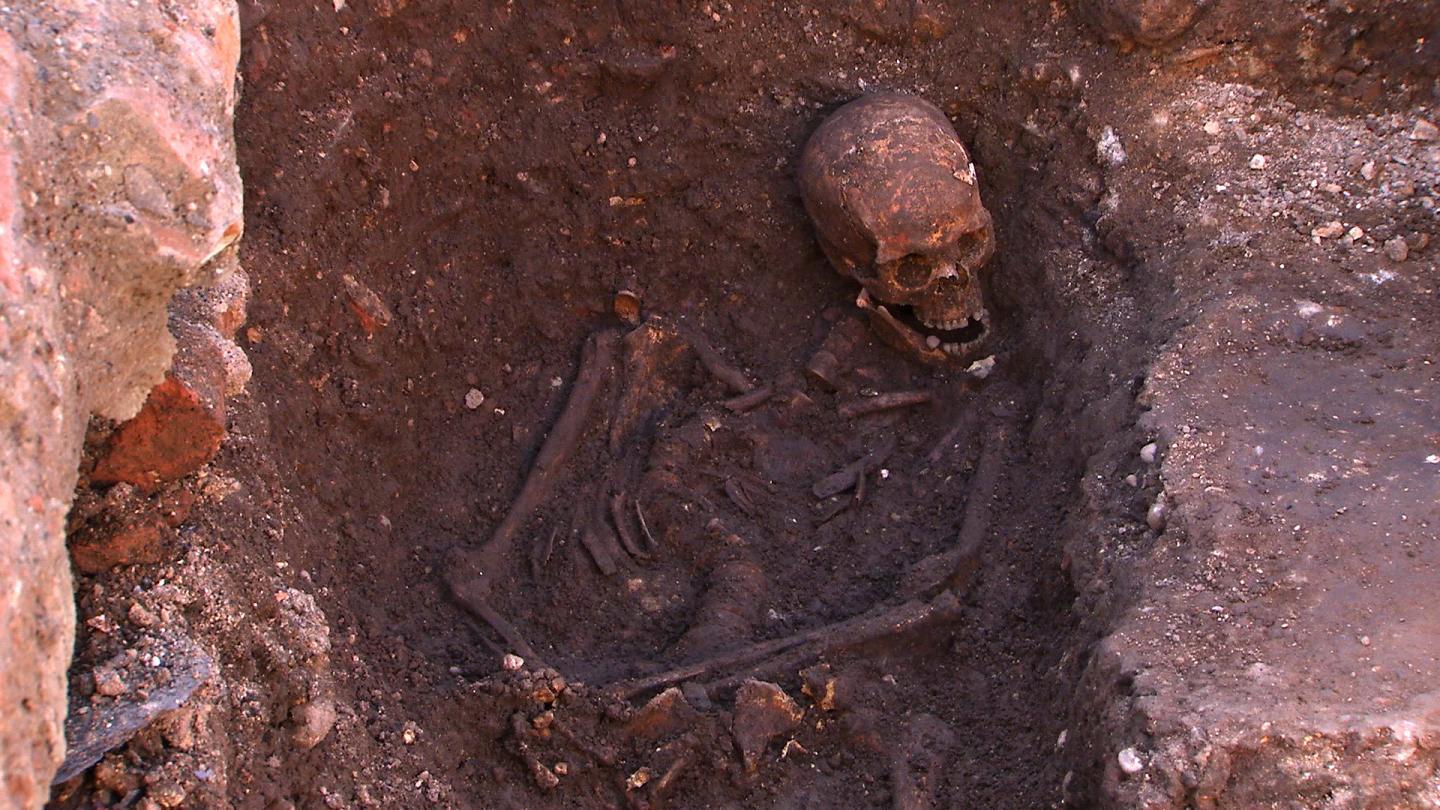In the most famous versions of Richard III, written by William Shakespeare, the last Plantagenet king was physically and mentally deformed.
But the public probably did not know what, and if they did, they wisely never mentioned it. A king busy fighting the War of the Roses could easily hide a deformity. Dr. Mary Ann Lund, of the University of Leicester's School of English argues that Richard's body image in life was carefully controlled and he probably kept any signs of his scoliosis hidden outside of the royal household - but after his death at the Battle of Bosworth, he was carried to Leicester and exhibited before being buried and it wasn't a secret after that.
The discovery of his skeleton two years ago affirmed that he had severe scoliosis though there was no surviving mention of Richard's distinctive physique written during his lifetime.

These are remains of Richard III discovered at Greyfriars. Credit: University of Leicester
Lund said, "Tailoring probably kept the signs of his scoliosis hidden to spectators outside the royal household of attendants, servants and medical staff who dressed, bathed and tended to the monarch's body."
The stripping of Richard's corpse at Bosworth in 1485 made his physical shape noticeable to many hundreds of witnesses, perhaps for the first time and Lund speculates how the treatment of Richard's dead body after the Battle of Bosworth is related to his later historical and literary reputation as 'Crookback Richard'. Richard's body came to be notorious for its misshapen appearance during the Tudor period, who replaced the Plantagenets as monarchs of England, although until the discovery of his body it was never clear whether this was pure fabrication to render accounts of his character and actions all the more extreme.
In Richard's case, this purported link between physique and character was frequently underlined, and as the Tudor reign became established, his image became more distorted - he gained a withered arm and unequal limbs, none of which were evident on the skeleton - to fit his blackened reputation. Shakespeare's history plays make much of Richard's physique - portraying his character as deformed and explicitly hunchbacked. In Henry VI, Part 3, he claims that nature made 'an envious mountain on my back/Where sits deformity to mock my body' while in Richard III, Queen Elizabeth calls him 'that foul bunch-backed toad'.
Dr Lund added: "Stage history has reincarnated Richard as monster, villain and clown, but recent events have helped us to re-evaluate these physically defined depictions and strip back the cultural accretions that have surrounded his body.
"The care he in all probability received for his scoliosis from his surgically trained physician was large in scale: traction and manual manipulation needed specially designed equipment, space and assistants. Yet, it may have been only a relatively small group of people in Richard's trusted circle who knew of his condition. The absence of contemporary testimony does not prove this, however.
"What is certain is that, after his death, the exposure of Richard's body went beyond the two days of its exhibition in Leicester. That moment after Bosworth inaugurated a longer and more brutalising process, in which an ever-more twisted physique was revealed to the public eye, his own body becoming deployed as a major tactic in the rhetorical strategy against him. When Shakespeare's Richard boasts of his shape-changing potential, he registers too the bending course of history and myth making."
Citation: Mary Ann Lund, 'Richard's back: death, scoliosis and myth making', Medical Humanities DOI:10.1136/medhum-2014-010647





Comments